Synopsis
As multilayer film is one the most challenging recycling applications, state-of-the-art technologies in the field of plastics extrusion are in great demand, to provide new recycling-friendly designs. By using multilayer mono material composites, packaging manufacturers achieving an equal product performance at full recyclability. However, that only solves half of the problem. If you look at present-day waste streams, even fully recyclable packaging normally is downcycled, goes to landfills or is incinerated, because waste sorting lines cannot reliably distinguish between recyclable and non-recyclable packaging. Therefore, a tracing standard is needed that records all recycling-relevant information from the production process and makes it accessible for recycling via a marking on the packaging.
Multilayer film is one the most challenging recycling applications. It is almost impossible to separate plastics once they have been combined and recycle them efficiently on an industrial scale. One essential problem is the different melting temperatures of the various types of plastic. To recycle plastics, they must be remelted. The temperature must be selected so that the highest melting point is reached in the material composite. Depending on the composition, this can mean that a material with a lower melting point already incinerates in the process and thus contaminates the melt. A recyclate gained from multi material composites can then mostly only be used in very basic applications, such as very thick-walled injection moulded parts or maximally in black garbage bags. Strictly speaking, this is downcycling rather than recycling.
Design for recycling
Nevertheless, there are promising approaches to reconciling multilayer film and recycling. One option, to allow even low-quality recyclates to be partly used in high-quality applications, is to process the recyclate in the middle layer of a plastic film and encapsulate it with outer layers consisting of virgin material. In this way, the recyclate can provide certain mechanical functions within the material composite. Extrusion equipment capable of processing recyclate in this form is available on the market.
The greater long-term potential lies in the design of fully recyclable multilayer films, from which high-quality recyclates can then be obtained more efficiently in economic terms. The keyword here is “mono material composites”. In the case of flexible film packaging (a conventional soap pouch for example), different plastics, such as PE and PET, are usually processed in the individual layers to achieve the specific properties. Today’s state-of-the-art manufacturing processes enable providing all the necessary functions even with the same material. Special stretch processes can be used to give a PE film the same properties as a PET film. Thus, so-called All-PE pouches can be produced as a mono-material composite that is fully recyclable. PET is replaced by PE, so a pure PE recyclate can be obtained during recycling.
Furthermore, a fully recyclable packaging design should contain as few printing inks as possible (and/or recycling-friendly inks), as well as adhesives and additives, in order to avoid contaminations. A packaging designed in this way can then ultimately be reprocessed into the very same packaging again at constant recyclate rates without losing performance.
Innovative recycling technologies for a true circular economy
A recycling-friendly design, however, only solves half of the problem. If you look at present-day waste streams, even fully recyclable packaging normally is downcycled, goes to landfills or is incinerated. The problem is that waste sorting lines cannot reliably distinguish between recyclable and non-recyclable packaging. To make this possible, a tracing standard is needed for plastic packaging that records all the information from the production process in the form of a digital product passport and makes it accessible via a marking on the packaging. In this way, pure waste fractions can be formed as part of the recycling process, with detailed information on the exact composition (plastics, inks, adhesives, additives etc.). This is the key to obtaining high-quality recyclate for true recycling.
A cross-industry consortium, that pursue precisely this goal, is currently developing the open and globally applicable tracing standard R-Cycle to ensure the seamless documentation of recyclable packaging properties along the value chain. It is accessible to any production facility, from plastic film or injection molding machines through to converting, printing, and filling machines. To retrieve the stored information QR codes, digital watermarks or other suitable tracers are applied to the packaging.
R-Cycle is developed to market maturity by a number of technology companies and organizations across the entire value chain. The tracing technology behind R-Cycle is based on the EPCIS standard by GS1 – the leading global network for cross-industry process development known from more than six billion scanned barcodes every day.
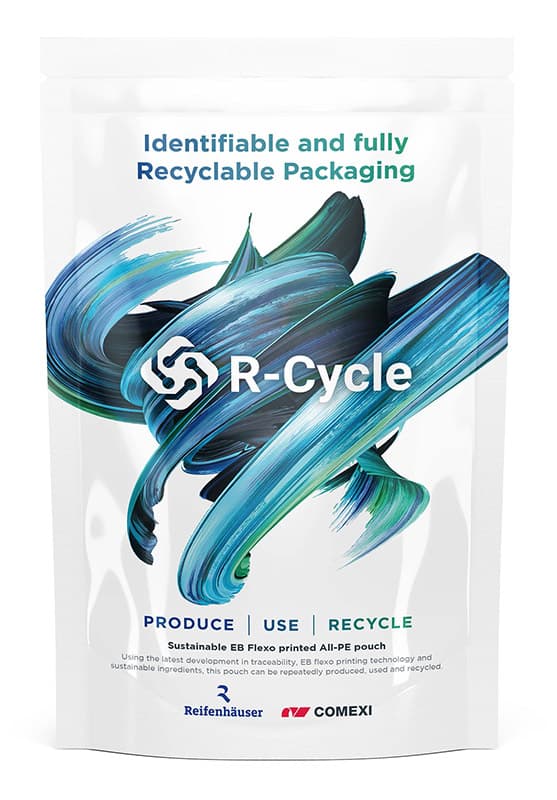
Fully recyclable multilayer mono material pouch (Picture credit: R-Cycle)
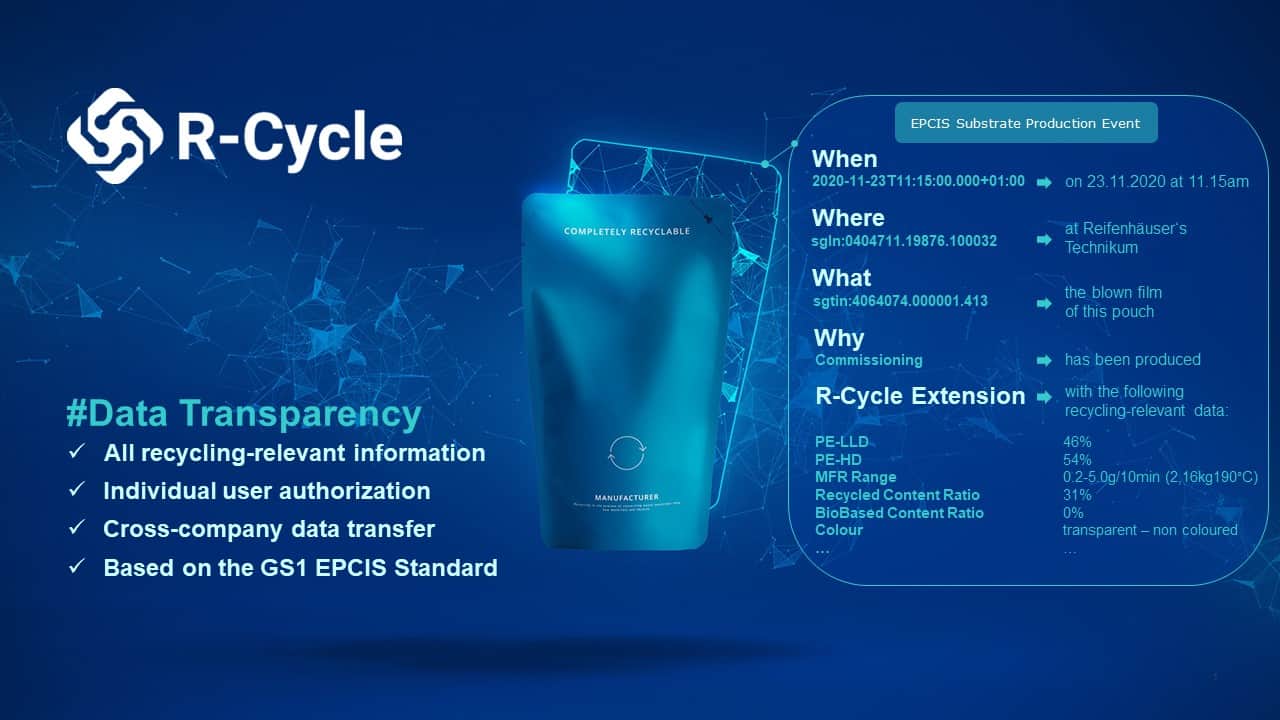
R-Cycle makes recycling-relevant packaging data transparent (Picture credit: R-Cycle)
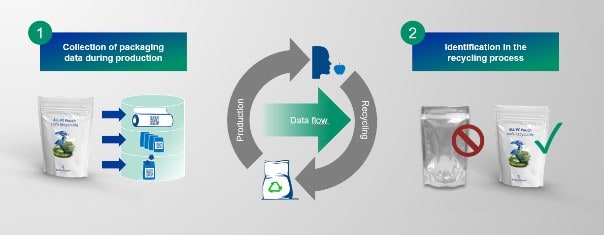
R-Cycle tracing concept for plastic packaging (Picture credit: R-Cycle)
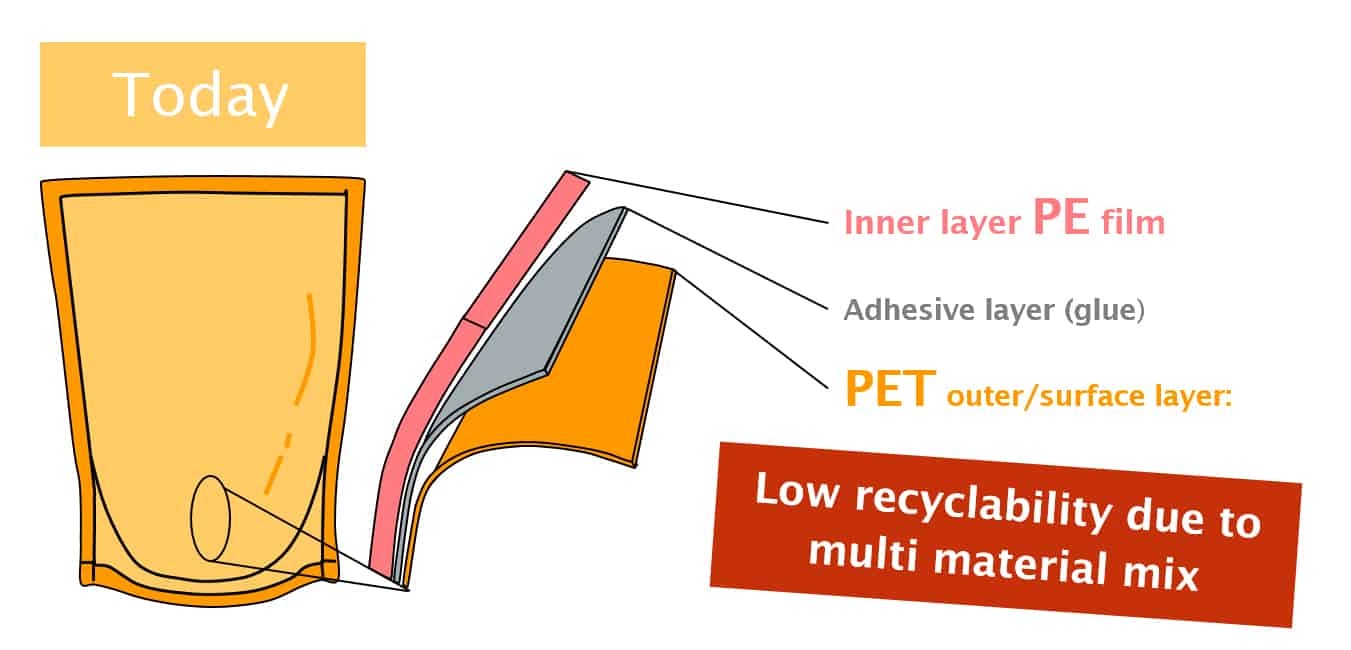
Multi material mix packaging (Picture credit: Reifenhäuser)
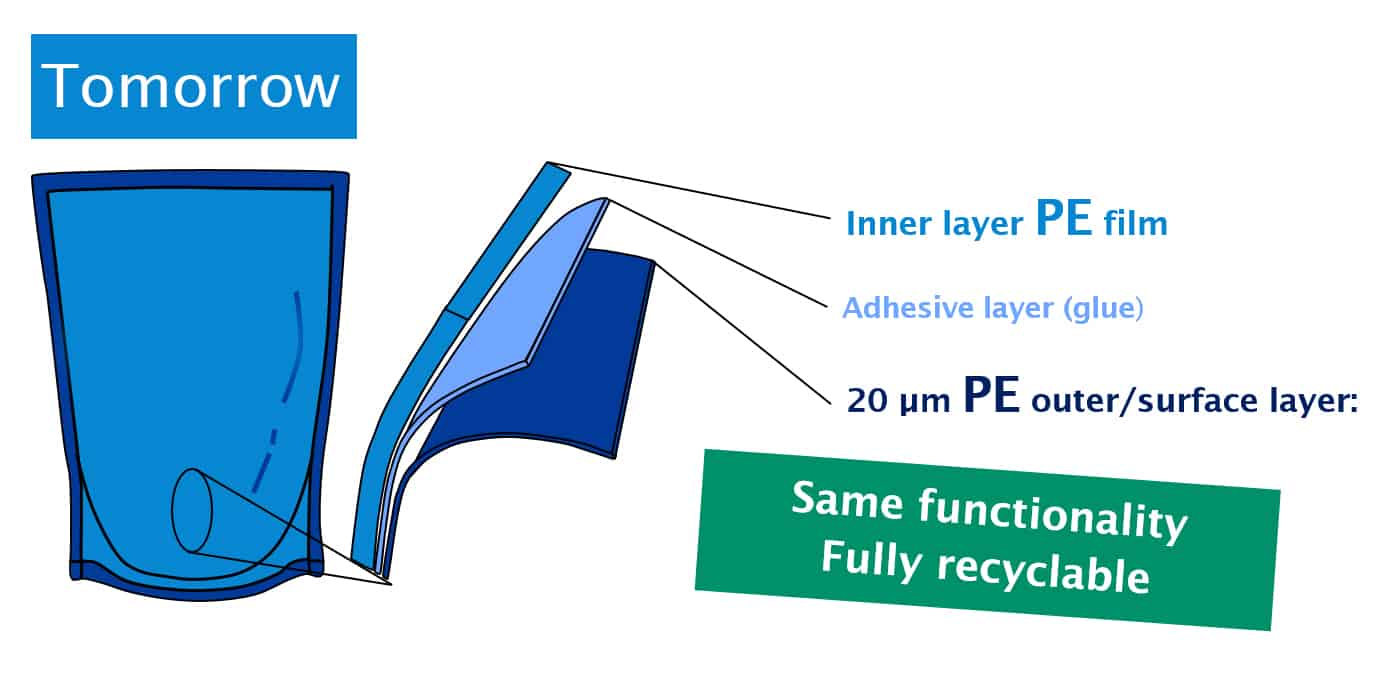
Mono material packaging (Picture credit: Reifenhäuser)
Benedikt is working for the Reifenhäuser Group – a leading plastics extrusion machinery provider - for 6 years in various positions. His focus is on the topic of digitalization. He is currently responsible for all operational and strategic activities of the cross-company R-Cycle initiative. The aim of this joint project is to digitally and automatically document recycling-relevant properties and ingredients of plastic packaging in the production process and to make them transparent for the recycling process.





